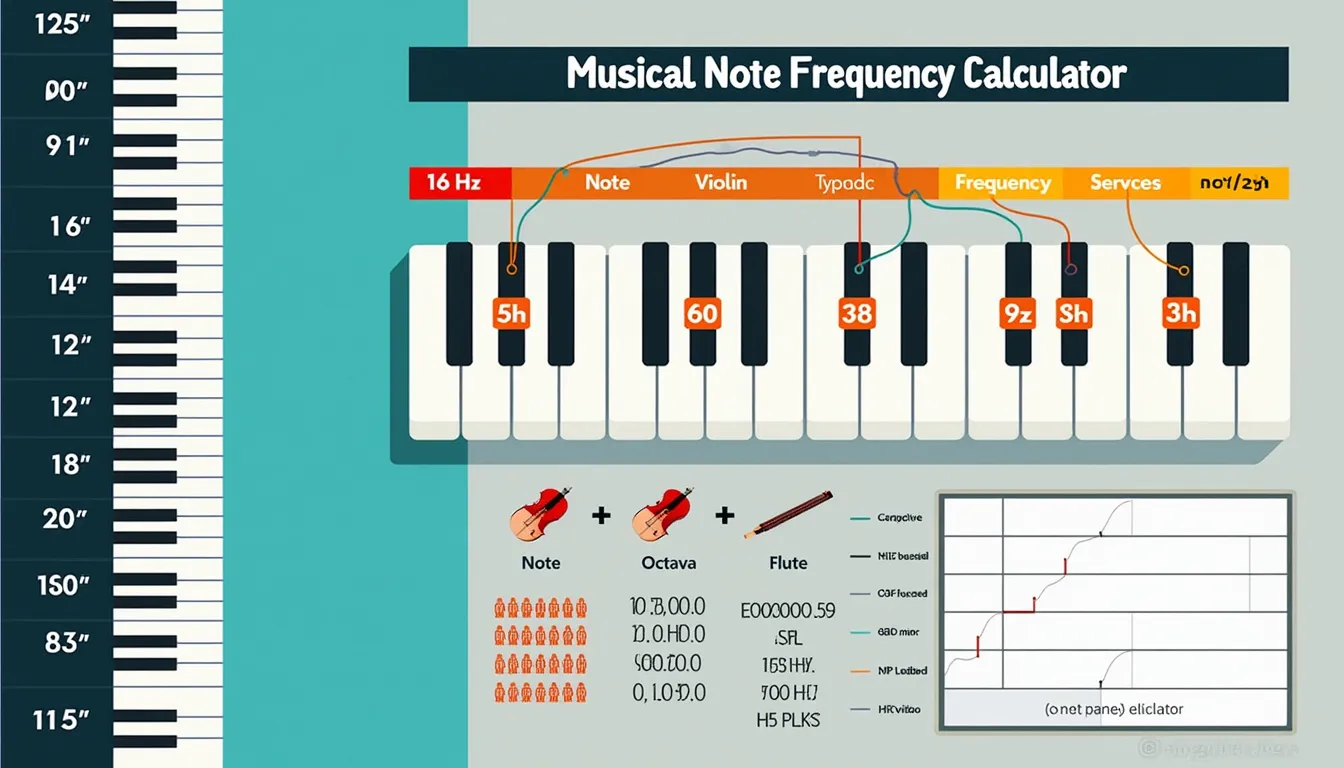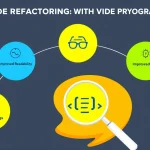Is this tool helpful?
How to use the tool
1 Choose your desired note
Select a chromatic note (C through B, sharps/flats included).
- Sample A: G♯ (value 8)
- Sample B: F♯ (value 6)
2 Enter its octave
Type an integer from 0 (lowest) to 8 (highest).
- Sample A: 2
- Sample B: 7
3 Set a reference note
Pick any note that you know the frequency of—A is only the default.
- Sample A: F (value 5)
- Sample B: C♯ (value 1)
4 Enter the reference octave
This must match the octave of the reference frequency you type next.
- Sample A: 4
- Sample B: 3
5 Type the reference frequency (Hz)
Acceptable range: 16 – 20 000 Hz.
- Sample A: 349.23 Hz (standard F4)
- Sample B: 277.18 Hz (standard C♯3)
6 Read the result
The calculator multiplies or divides the reference by precise semitone ratios and returns the pitch to two decimals.
Formula used
Semitone distance $$n=(d\!-\!r)+12(o_d\!-\!o_r)$$ Frequency $$f=f_0 \times 2^{ rac{n}{12}}$$ where d = desired-note value, r = reference-note value, od = desired octave, or = reference octave.
Example calculation A
- Desired G♯2, Reference F4 = 349.23 Hz
- n = (8 − 5)+(2 − 4)×12 = −21 semitones
- f = 349.23 × 2^{−21/12} ≈ 103.7 Hz
Example calculation B
- Desired D6, Reference C3 = 130.81 Hz
- n = (2 − 0)+(6 − 3)×12 = 38
- f = 130.81 × 2^{38/12} ≈ 1 175.9 Hz
Quick-Facts
- Concert pitch: A4 = 440 Hz (ISO 16:1975)
- Piano span: 27.5 Hz (A0) – 4 186 Hz (C8) (Steinway & Sons Specs)
- Human hearing: 20 – 20 000 Hz (NIH, 2013)
- An octave equals 12 equal-tempered semitones (Benward & Saker, 2003)
FAQ
What does the calculator do?
It converts any note/octave into an exact frequency using equal-temperament math, eliminating guesswork for tuning (ISO 16:1975).
How accurate is the output?
Outputs use double-precision JavaScript math, giving ±0.01 Hz resolution—far finer than the ±1 Hz tolerance of most clip-on tuners (Peterson Tuners Spec Sheet).
Can I change concert pitch?
Yes. Set A4 to 432 Hz for Verdi tuning or 415 Hz for Baroque repertoire and all other notes shift automatically (Baroque Pitch Standard, ASCAP).
Why does frequency double every octave?
Octave perception follows the logarithmic nature of hearing; doubling f maintains interval identity (Hartmann, Signals Sound and Sensory Perception 2011).
How are sharps and flats handled?
The tool labels enharmonic pairs (e.g., C♯/D♭) with one numeric value, so both map to the same frequency in equal temperament (Benward & Saker, 2003).
What if I enter out-of-range values?
The underlying script blocks numbers below 16 Hz or above 20 000 Hz, matching common audio-interface limits (Focusrite Scarlett Manual).
Is it useful for microtonal music?
Compute adjacent semitones, then derive quarter-tone frequencies using the geometric mean formula shown earlier (Wilson, Microtonal Music, 2018).
Does it work offline?
Yes. The HTML & JS run locally in any browser; no server round-trip is required—“all math executes client-side” (MDN Web Docs).
Important Disclaimer
The calculations, results, and content provided by our tools are not guaranteed to be accurate, complete, or reliable. Users are responsible for verifying and interpreting the results. Our content and tools may contain errors, biases, or inconsistencies. Do not enter personal data, sensitive information, or personally identifiable information in our web forms or tools. Such data entry violates our terms of service and may result in unauthorized disclosure to third parties. We reserve the right to save inputs and outputs from our tools for the purposes of error debugging, bias identification, and performance improvement. External companies providing AI models used in our tools may also save and process data in accordance with their own policies. By using our tools, you consent to this data collection and processing. We reserve the right to limit the usage of our tools based on current usability factors.







